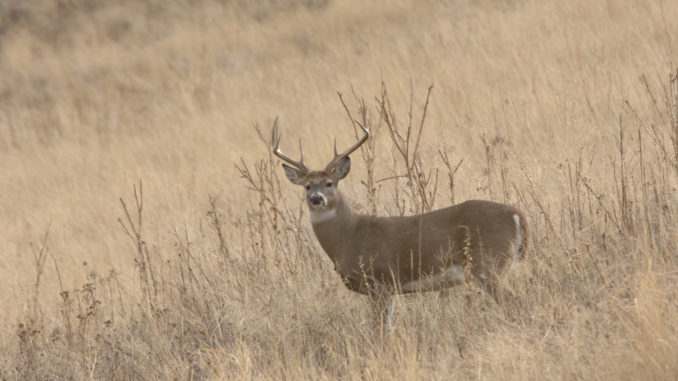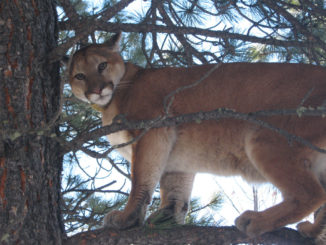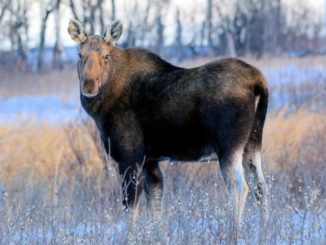
It’s a relatively new and unpleasant reality for some hunters in North Dakota— the existence and spread of Chronic Wasting Disease (CWD). With no way to cure or inoculate against the disease, it seems the Game & Fish Department is left with little choice but to manage against the spread of it.
Just in case you’re unfamiliar with CWD, it’s described on the North Dakota Game & Fish website as follows:
“Chronic wasting disease (CWD) is a progressive, fatal disease of the nervous system of white-tailed deer, mule deer, elk and moose. It belongs to a family of diseases known as Transmissible Spongiform Encephalopathies (TSEs), or prion diseases. Although CWD shares certain features with other TSEs, like bovine spongiform encephalopathy (BSE or mad cow disease), scrapie in sheep and goats, and Creutzfeldt – Jakob disease (CJD) in humans, it is a distinct disease apparently affecting only deer, elk and moose. It causes damage to portions of the brain; creating holes in the brain cells and causing a sponge-like appearance.”
Since first being detected in captive deer in a research facility in Colorado in the 1960’s, and in wild deer in 1981, the spread of CWD now affects 24 states and two Canadian provinces. North Dakota’s first case surfaced when a mule deer buck tested positive in the southwestern part of the state (Unit 3F2) in 2009. In April of this year, the state had its first documented case of a deer mortality due to the disease.
Just two weeks ago today, the Game & Fish Department confirmed that two more deer had tested positive for CWD— both mule deer. The disheartening news this time was that one of those animals was taken in the Badlands (Unit 4B)— the first positive test for North Dakota’s “iconic” landscape.
Although there are less than 20 documented cases of the disease, in a total of four units (3A1, 3B1, 4B, and 3F2), the North Dakota Game & Fish Department seems to be taking its existence very seriously. As their Outreach Biologist, Doug Leier, pointed out in this article for The Forum in September, the department:
“… has implemented regulations over subsequent years that are designed to minimize the spread of the disease within the state.
“In addition to carcass transportation restrictions from three different deer gun units where deer have tested positive for CWD, Game and Fish has prohibited hunting big game over bait in those same units, plus some adjacent units.”
For complete baiting and transport regulations, click here.
As you’re likely aware, deer rifle season opens this Friday at noon. With nearly 100 collection sites set up across the state, hunters are being asked to drop the heads off from any deer harvested that are yearlings or older. Fawns and head shot deer cannot be tested. Results will be received within 2-3 weeks. And while there is no evidence that CWD can be transmitted to humans, it’s recommended that meat from infected animals not be eaten.
It should also be noted here that while there are no CWD regulations in place for Unit 4B, the Game & Fish Department strongly suggests that hunters in that unit submit their deer heads for testing and resist transporting high-risk portions of the carcass — such as the brain and spinal cord — outside of that unit.
If you’d like more specifics on CWD, you can click here and here. In addition, while no cases of the disease have been detected in North Dakota’s elk and moose populations, there are testing opportunities and regulations that apply to these animals as well. You can see those here.
Good luck. Be safe.
PLEASE LIKE & SHARE!
Sources:
- https://gf.nd.gov/wildlife/diseases/cwd/faq
- https://www.cdc.gov/prions/cwd/occurrence.html
- https://www.kfyrtv.com/content/news/First-documented-case-of-CWD-deer-mortality-in-ND-reported-near-Williston-507363701.html
- https://gf.nd.gov/news/3394
- https://www.inforum.com/sports/outdoors/4642985-Doug-Leier-Regulations-designed-to-minimize-the-spread-of-chronic-wasting-disease
- https://www.kxnet.com/news/top-stories/hunters-asked-to-help-game-and-fish-test-for-chronic-wasting-disease/
- https://gf.nd.gov/wildlife/diseases/cwd
- http://cwd-info.org/faq/
- https://gf.nd.gov/wildlife/diseases/cwd/surveillance#other





